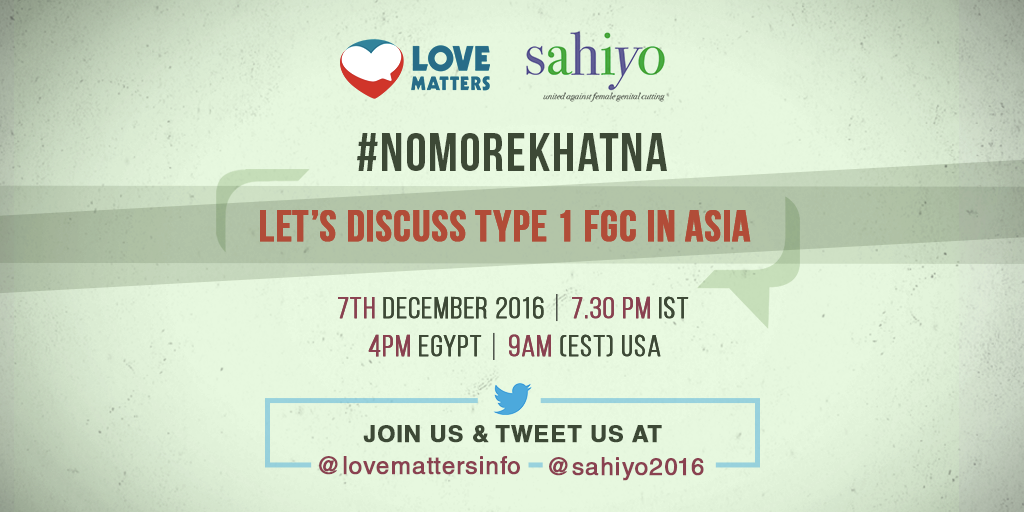Female Genital Cutting is practiced in many different ways, some less severe than others. But is a woman’s experience of such a ritual any less significant if the cutting was “mild”?
Love Matters India and Sahiyo would love to discuss this question – and many others – with all of you in a Twitter Chat on Wednesday, December 7, 2016.
Timings: The Twitter Chat begins at
- 7.30 pm IST (India and Sri Lanka)
- 9 am EST (US east coast)
- 4 pm in Egypt
- 10 pm in Singapore and Malaysia
Here is how you can participate:
- Log into your Twitter account (or make one, if you are not on Twitter yet!)
- Follow the handles @lovemattersinfo and @sahiyovoices
- Respond to our questions and tweets about Type I FGC
- Remember to use the hashtag #NoMoreKhatna in all your tweets!
Why this discussion is important: According to United Nations statistics, at least 200 million girls from 30 countries around the world have been subjected to Female Genital Cutting / Mutilation (FGC/M), a practice that involves cutting away varying degrees of the female genitalia.
The World Health Organisation classifies FGC into four types, depending on how severe the cut is. For decades, activists, researchers, funders, and the media have focused mainly on Types II and III, the most severe forms of genital cutting.
Type I, however, has often been overlooked. This form involves cutting the clitoral hood, and/or part or all of the clitoris, and it is prevalent in a number of Asian communities, including the Dawoodi Bohras and Malay Muslims. All too often, concerns about this “mild” form of genital cutting are dismissed as overreactions. “It is just a small nick, a small slice of skin,” we are told. “It is not the same as the mutilation done in Africa,” they say.
We believe it is time to re-examine these notions about Type I FGC, to give voice to those who have been affected, and to recognise that even the least severe genital cuts are still a form of gender violence.
And as a prequel to the Twitter Chat, do watch this video by Love Matters India and director Priya Goswami, featuring Bohra voices of resistance to Type I FGC:

